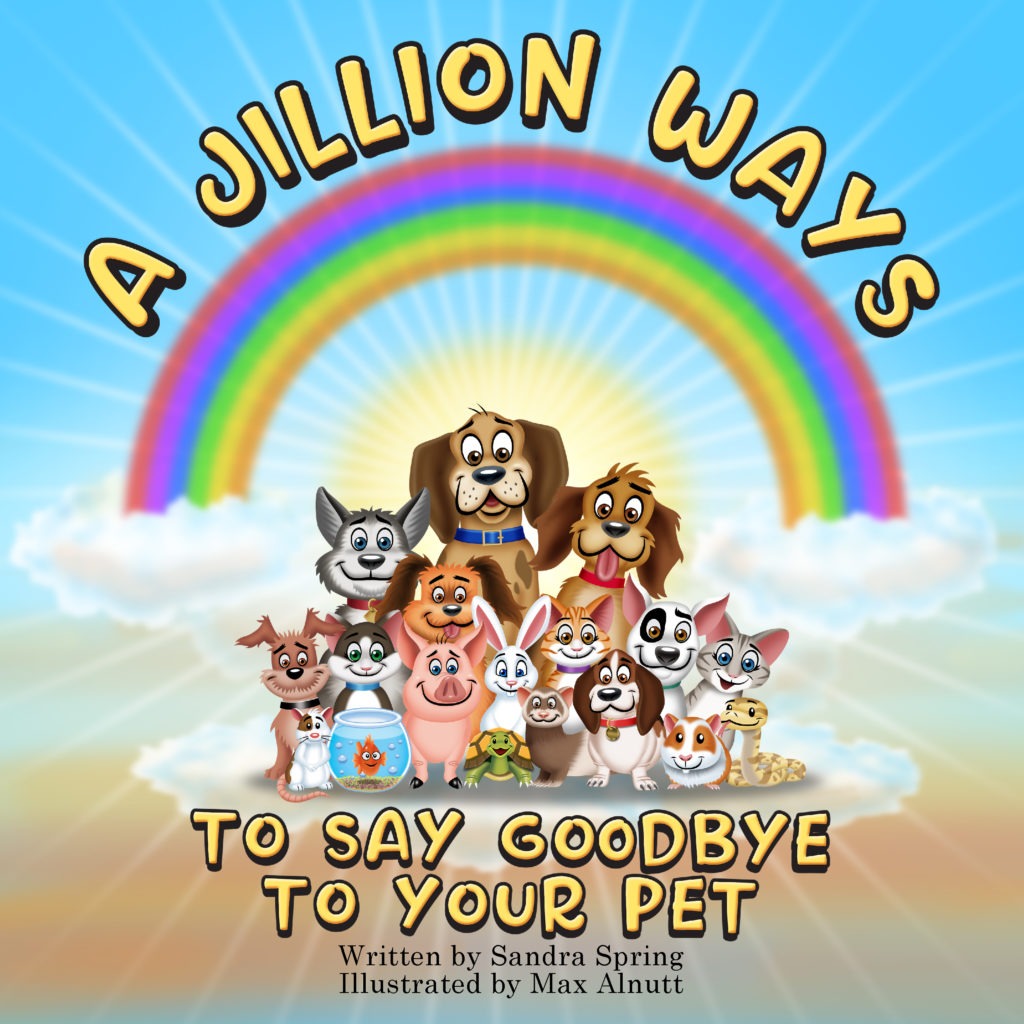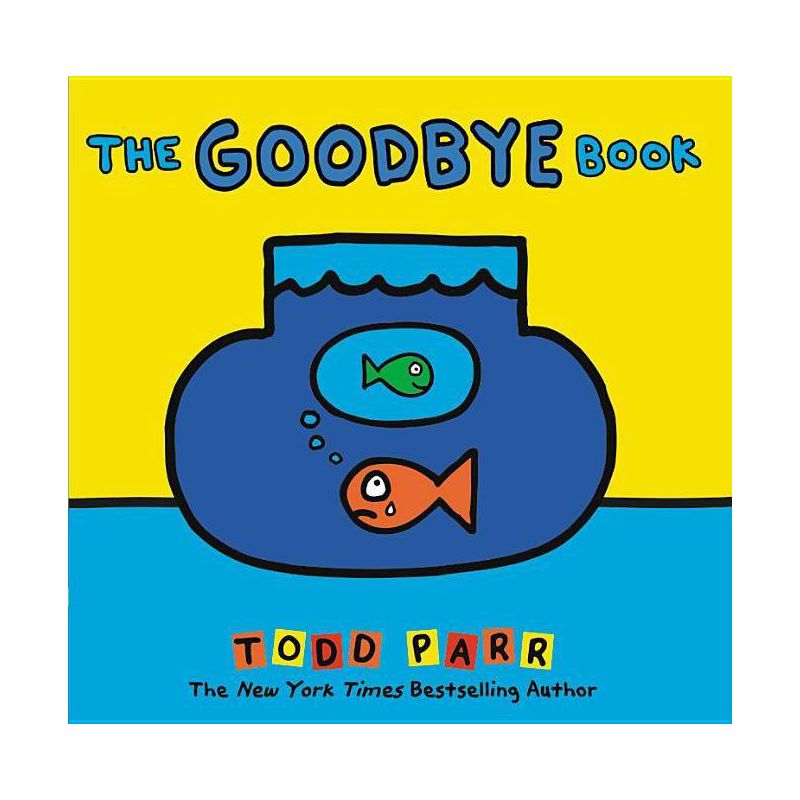The death of a pet is a difficult emotional experience, especially for children. Kids form bonds with their pets and learn to define their own lives through their relationships with their beloved animals. In fact, many parents choose to bring a pet into the family to teach their children about empathy, responsibility, and eventually even—aware that most pets have shorter life spans—death.
Here are five books that approach the subject of pet loss and death with empathy, openness, and an appreciation for the value our pets have as members of our families—and how losing a special pet impacts children.
1: A Jillion Ways To Say Goodbye To Your Pet, written by Sandra Spring and illustrated by Max Alnutt.

This colorful and thoughtfully composed children’s book offers a sensitive but honest depiction of the emotions that kids experience upon the loss of a special pet. The poignant words and vibrant illustrations address the complex spectrum of feelings that children experience in their grief—from sadness and loneliness to happiness and even guilt— as normal and meaningful. Author Sandra Spring explains that these feelings are often jumbled, connected, and can even happen mixed together at the same time. For example, laughing at the funny memories of your pet while also feeling sad that they are gone.
A Jillion Ways To Say Goodbye To Your Pet also has an activity section in the final pages for children to express their emotions—including drawing a picture of their pet and their feelings, exercises for talking to others about their feelings, and a collaborative pet memory celebration activity. This book, a relative newcomer published in 2022, is a valuable resource for parents and families, school teachers and librarians, and even veterinarians and veterinary care professionals who care about the mindful development of children and helping them navigate the unfortunate experience of pet loss.
2: When A Pet Dies, written by Mr. Rogers and photographed by Jim Judkis.

No one understood the concerns and needs of children better than Mr. Rogers. Even after his own death, the wisdom and compassion of Mr. Rogers lives on in this heartfelt and relevant book about how pet loss affects children. In these pages, Mr. Rogers deftly straddles the need for a soft sensibility and true honesty while addressing such a complex and painful topic.
As usual, Mr. Rogers is able to teach kids about the reality of topics such as the death of pets, instead of sugar coating it with metaphors, euphemisms, or misleading innuendos about what happens to our animals when they pass on. First published in 1988, this book also offers old-school pictures of kids and environments that will evoke a powerful sense of nostalgia for parents of a certain age. The message, however, is timeless as more and more families today include and think of their pets as members of their families.
3: The Goodbye Book written and illustrated by Todd Parr.

In this book, author Todd Parr is able to tackle an emotionally complex experience through the power of basic colors, words, and honest storytelling. The straightforward illustrations communicate the impact of pet loss through the character of a fish—in a simple fish bowl—who has lost his dear friend. The litany of emotions the fish navigates offer a heartfelt portrayal of the feelings both children and adults encounter upon the death of a pet.
Without judgment or hyperbole, the humility of this book makes it an accessible and colorful exploration of the emotional journey that begins when we lose a pet we love. First published in 2015, the elementary tone of The Goodbye Book skews it towards toddlers and younger children, but the creative way the subject matter is approached by talented author Todd Parr makes it a meaningful read for families helping their kids navigate the emotional labyrinth of grief, particularly the loss of a pet.
4: The Invisible Leash: An Invisible String Story About the Loss of a Pet, written by Patrice Karst and illustrated by Joanne Lew-Vriethoff.

Author Patrice Karst builds on the success of her book The Invisible String by extending the metaphor and message into the realm of pet loss to help children stay connected to their pets—and their emotions. The story centers on a young boy named Jack, whose dog Jojo succumbs to old age. Jojo’s death has a profound emotional impact on Jack, who struggles with grief despite the efforts of those around him to alleviate his pain.
However, when Jack befriends a girl named Emily, who has also experienced pet loss, she reveals to Jack the concept of the invisible leash that allows people to stay connected with their deceased pets who are now in “the beyond.” Published in 2021, this book offers an effective metaphor to connect children with pets who have passed on. However, be aware that in the context of the book the parents refer to adopting a new dog, which may set up some unwanted expectations for readers and their children.
5: The Rainbow Bridge: A Visit to Pet Paradise, written by Adrian Raeside.

This imaginative book expands on the familiar rainbow bridge metaphor to build out a spirited paradise where pets go upon their death to wait for their owners to join them (when the owners die, too)—so they can cross the rainbow bridge together. At the center of this story is a seven-year-old boy, Rick, and his dog Koko. When Koko passes from old age, Rick is consumed with grief. But, one night a quirky (he farts, hah) and ghostly messenger dog named Buster arrives beside Rick’s bed to retrieve one of Koko’s old toys.
Buster takes Rick to the magical paradise full of happy deceased pets which includes Koko. Koko shows Rick that he will live to be an old man who will be reunited with his pets when he dies. Before then, however, Koko tells Rick that he should love many pets before he dies. Back at home, Rick receives a new pet dog as a Christmas present. Published in 2012, this sincere book delves into the idea of an afterlife for pets and pet owners, which certainly appeals to many parents.
Conclusion:
Pet loss teaches children about our own mortality, and that is a profoundly challenging reality for young people to process. Pet loss books for children attempt to provide a sensitive and empathetic way to understand powerful emotions that are often expressed in actions, feelings, and confusion about what the death of a pet means—and feels like—today, tomorrow, and in the future. Thankfully, there are books to help explain this very human journey.